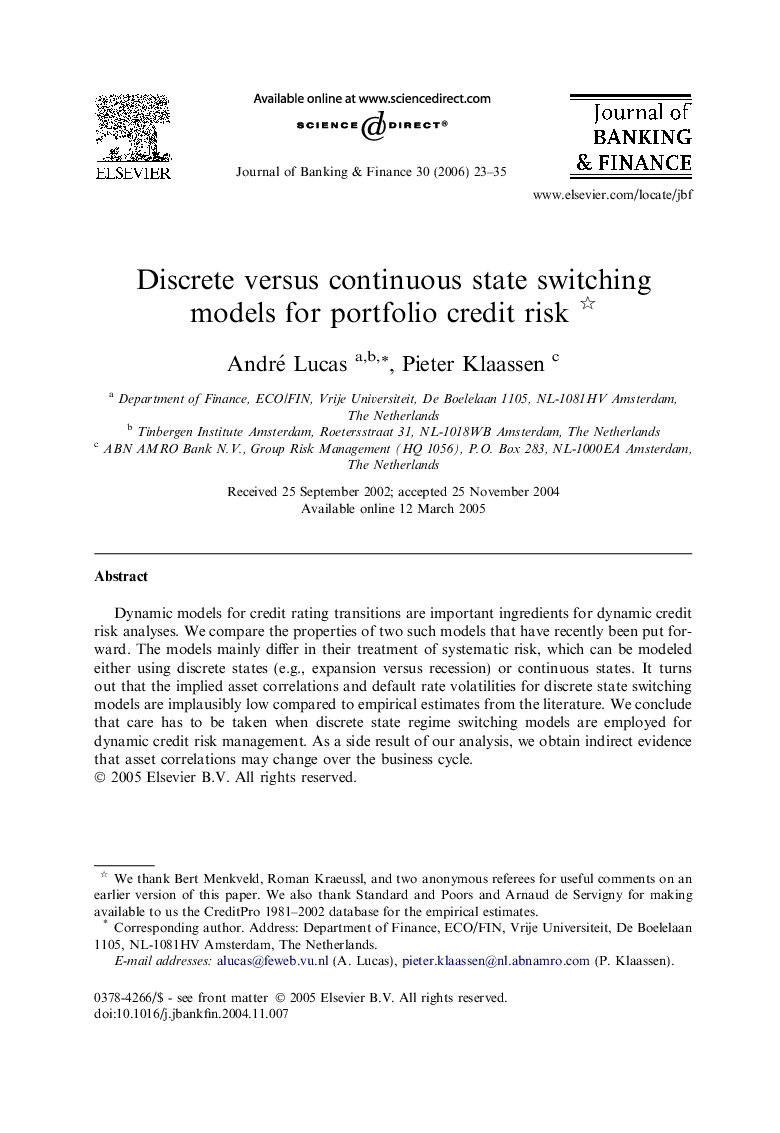| Article ID | Journal | Published Year | Pages | File Type |
|---|---|---|---|---|
| 5091632 | Journal of Banking & Finance | 2006 | 13 Pages |
Abstract
Dynamic models for credit rating transitions are important ingredients for dynamic credit risk analyses. We compare the properties of two such models that have recently been put forward. The models mainly differ in their treatment of systematic risk, which can be modeled either using discrete states (e.g., expansion versus recession) or continuous states. It turns out that the implied asset correlations and default rate volatilities for discrete state switching models are implausibly low compared to empirical estimates from the literature. We conclude that care has to be taken when discrete state regime switching models are employed for dynamic credit risk management. As a side result of our analysis, we obtain indirect evidence that asset correlations may change over the business cycle.
Related Topics
Social Sciences and Humanities
Economics, Econometrics and Finance
Economics and Econometrics
Authors
André Lucas, Pieter Klaassen,
